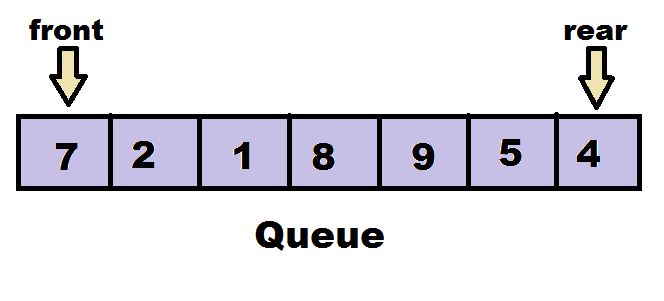In computer science, a queue is a data structure that stores elements in a specific order. It follows the First-In-First-Out (FIFO) principle, meaning that the first element added to the queue is the first one to be removed.
Queues are used in a variety of applications, from operating systems to web servers, and understanding how they work is essential for any programmer.
In this article, we’ll explore the basics of queues, their implementation, and some real-world examples of their use.

What is a Queue Data Structure?
A queue data structure is a collection of elements that are stored in a specific order. The order in which elements are added to the queue is important, as the first element added is the first one to be removed. This is known as the First-In-First-Out (FIFO) principle.
Queues are commonly used in computer science for tasks such as managing processes in an operating system, handling requests in a web server, and implementing algorithms in programming languages.
Understanding how queues work is essential for any programmer looking to build efficient and effective software.
How Does a Queue Work?
A queue works on the principle of First-In-First-Out (FIFO), meaning that the first element added to the queue is the first one to be removed. Elements are added to the back of the queue and removed from the front. This ensures that the order of elements is maintained and that the oldest element is always the first to be processed.
Queues are commonly used in computer science for tasks such as managing processes in an operating system, handling requests in a web server, and implementing algorithms in programming languages.
Examples of Queue Applications
Queues are used in a variety of real-world applications.
For example, in a restaurant, a queue is formed when customers wait in line to be seated or to place their orders.
In a bank, a queue is formed when customers wait in line to withdraw money or to speak with a teller.
In computer science, queues are used to manage processes in an operating system, handle requests in a web server, and implement algorithms in programming languages.
Queues are also used in transportation systems, such as airports and train stations, to manage the flow of passengers.
Types of Queues
There are several types of queues, each with its own unique characteristics and uses. The most common types of queues are linear queues, circular queues, priority queues, and double-ended queues.
Linear queues follow a first-in, first-out (FIFO) order, while circular queues have a circular structure and can be implemented using arrays.
Priority queues prioritize certain elements over others based on a set of criteria, and double-ended queues allow elements to be added or removed from both ends.
Understanding the different types of queues can help developers choose the best data structure for their specific needs.
Queue Operations and Methods
Queues have several operations and methods that allow for efficient manipulation of the data structure.
The most common operations include enqueue, which adds an element to the back of the queue, and dequeue, which removes an element from the front of the queue.
Other operations include peek, which allows you to view the element at the front of the queue without removing it, and isEmpty, which checks if the queue is empty.
Additionally, some queues may have methods for resizing or clearing the queue.
Understanding these operations and methods is crucial for effectively using queues in programming.